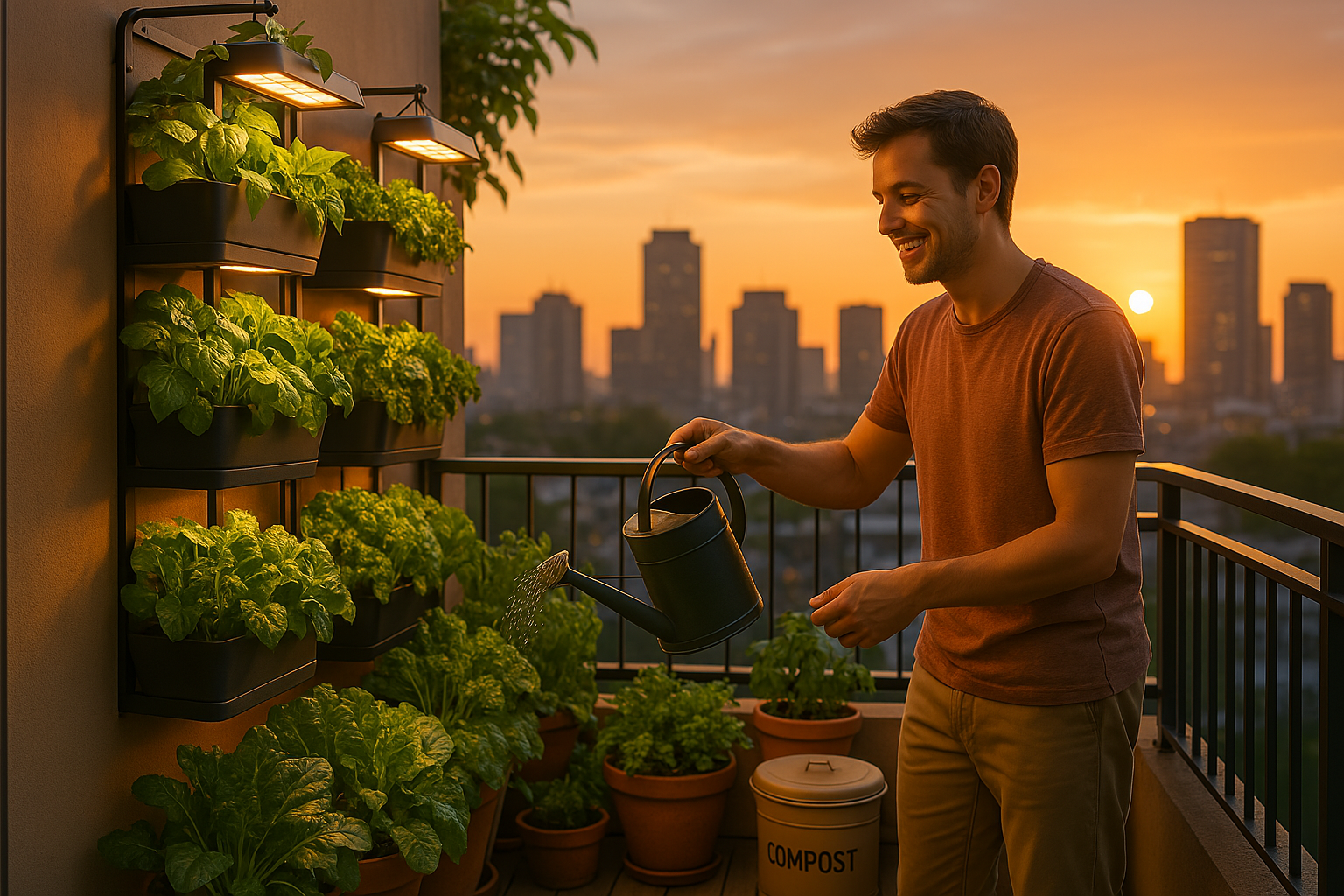Urban Gardening for Beginners: A 2025 Guide to Growing Green in the City
In 2025, urban gardening is no longer just a hobby it’s a lifestyle shift toward sustainability, self-sufficiency, and mental well-being. Whether you live in a high-rise apartment or a compact townhouse, you can transform even the smallest space into a thriving green oasis. This comprehensive guide will walk you through everything you need to know to start your own urban garden, even if you’ve never touched a trowel before.
🌱 What Is Urban Gardening?
Urban gardening is the practice of growing plants vegetables, herbs, fruits, or flowers within city environments. It includes container gardening on balconies, vertical gardens on walls, rooftop plots, hydroponic systems, and even indoor setups using smart technology.
Why It Matters in 2025
- Food security: With rising food prices and supply chain disruptions, growing your own produce offers independence.
- Sustainability: Reduces your carbon footprint and food waste.
- Mental health: Studies show gardening reduces stress and improves mood.
- Community building: Shared gardens foster local connections.
🧭 Getting Started: Planning Your Urban Garden
Before you plant your first seed, consider these foundational steps:
1. Assess Your Space
- Balcony or patio: Ideal for container gardening.
- Windowsill: Great for herbs and microgreens.
- Rooftop: Perfect for raised beds or larger containers.
- Indoor corners: Use grow lights and smart planters.
2. Check Sunlight Exposure
Most edible plants need 4–6 hours of sunlight daily. Use a sunlight tracking app or observe your space throughout the day.
3. Choose Your Gardening Style
- Container gardening: Flexible and beginner-friendly.
- Vertical gardening: Maximizes space using wall planters or trellises.
- Hydroponics: Soil-free, water-efficient, and ideal for tech-savvy gardeners.
- Smart gardening: Automated systems that monitor water, light, and nutrients.
🪴 Best Plants for Urban Gardeners in 2025
Start with low-maintenance, high-yield plants:
🌿 Herbs
- Basil
- Mint
- Cilantro
- Thyme
🥬 Leafy Greens
- Spinach
- Lettuce
- Kale
- Arugula
🍅 Vegetables
- Cherry tomatoes
- Peppers
- Radishes
- Green onions
🌸 Bonus: Edible Flowers
- Nasturtiums
- Calendula
🧪 Soil, Compost & Watering Tips
Soil & Compost
- Use organic potting mix with good drainage.
- Add coconut coir or perlite to retain moisture.
- Start a kitchen compost bin for peels, coffee grounds, and eggshells.
Watering Hacks
- Water early morning or late evening.
- Use self-watering containers or drip irrigation kits.
- Collect rainwater in barrels for eco-friendly hydration.
🧱 Real-World Example: A Rooftop Garden in Karachi
In 2024, a Karachi-based architect converted his 400 sq. ft. rooftop into a lush garden using recycled containers, solar-powered irrigation, and native plants. He now grows 70% of his household’s vegetables and has inspired neighbors to do the same.
🧠 Expert Tips for Urban Gardening Success
“Start small and grow with your confidence. Even a single basil plant on your windowsill is a win.” Dr. Ayesha Malik, Urban Agriculture Specialist, Lahore Green Futures
Pro Tips:
- Rotate crops every season to avoid soil fatigue.
- Use companion planting (e.g., basil with tomatoes) to deter pests.
- Join local gardening groups or forums for support and seed swaps.
🧰 Tools & Supplies Checklist
Here’s what you’ll need to get started:
- ✅ Pots or containers with drainage holes
- ✅ Organic potting mix
- ✅ Seeds or seedlings
- ✅ Watering can or spray bottle
- ✅ Gardening gloves
- ✅ Pruning shears
- ✅ Compost bin (optional but recommended)
📊 Urban Gardening by the Numbers (2025)
- 68% of urban dwellers in Asia now grow at least one edible plant at home.
- 42% of balcony gardeners report saving $20–$50/month on groceries.
- 80% of surveyed gardeners say it improved their mental well-being.
(Source: Urban Green Living Report 2025)
🧩 Common Challenges & How to Overcome Them
| Challenge | Solution |
|---|---|
| Limited sunlight | Use grow lights or choose shade-tolerant plants |
| Pests | Use neem oil, garlic spray, or introduce ladybugs |
| Overwatering | Use moisture meters or self-watering pots |
| Space constraints | Go vertical with hanging baskets or wall planters |
🧠 FAQ: Urban Gardening for Beginners
Q1: Can I start urban gardening without a balcony? Yes! Use windowsills, indoor grow lights, or vertical wall planters.
Q2: How much time does it take to maintain a small garden? Just 10–15 minutes a day is enough for watering and basic care.
Q3: What’s the easiest vegetable to grow indoors? Green onions—they regrow from kitchen scraps and need minimal care.
Q4: Do I need to buy expensive tools? Not at all. Start with basic containers and reuse household items like yogurt cups or old buckets.
Q5: How do I prevent pests naturally? Use neem oil, garlic spray, or plant marigolds to repel insects.
Q6: Can I grow food year-round? Yes, especially with indoor setups or by rotating seasonal crops.
Q7: Is hydroponics better than soil gardening? It depends on your space and goals. Hydroponics is efficient but requires more setup and monitoring.
🧾 Conclusion: Grow Where You Are
Urban gardening is more than a trend it’s a powerful way to reclaim control over your food, reduce your environmental impact, and reconnect with nature. Whether you’re growing basil on a windowsill or tomatoes on a rooftop, every plant you nurture is a step toward a greener, healthier future.

Easy and informative material